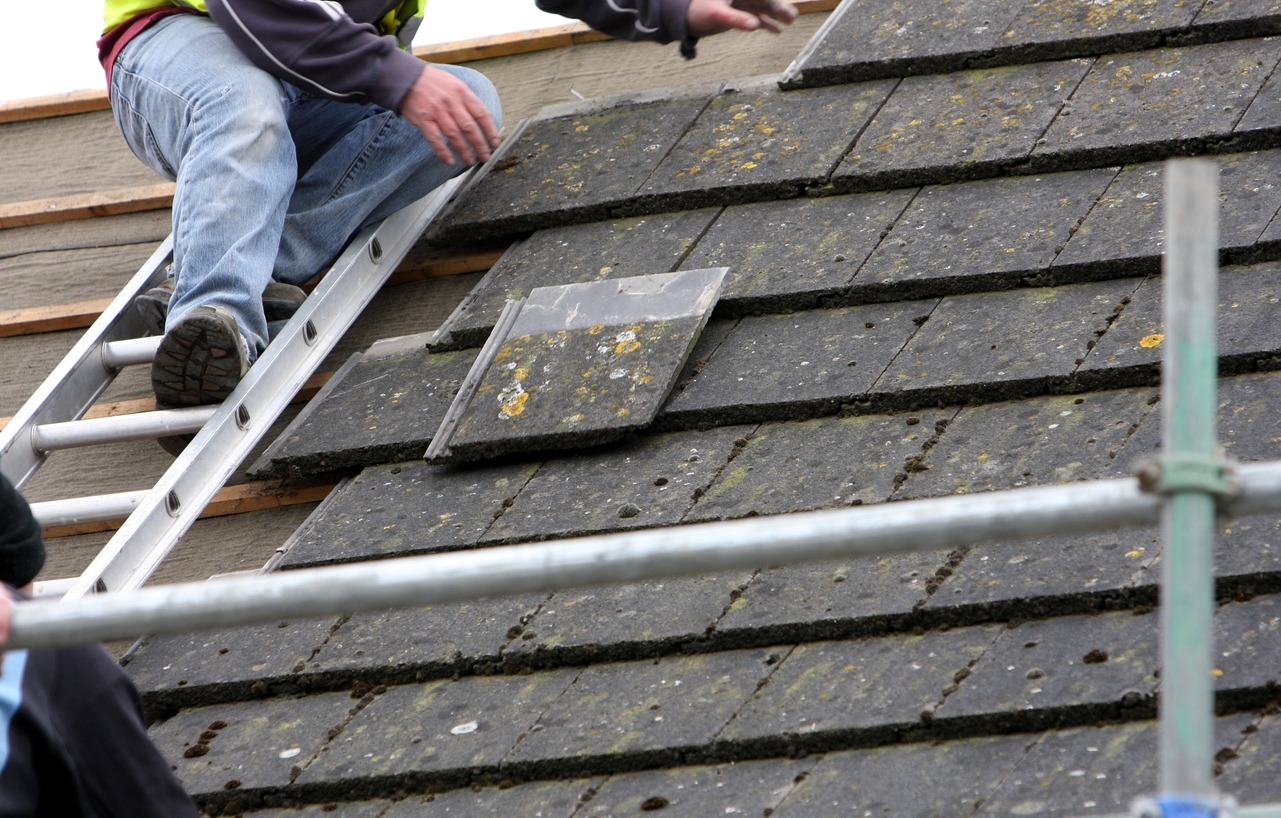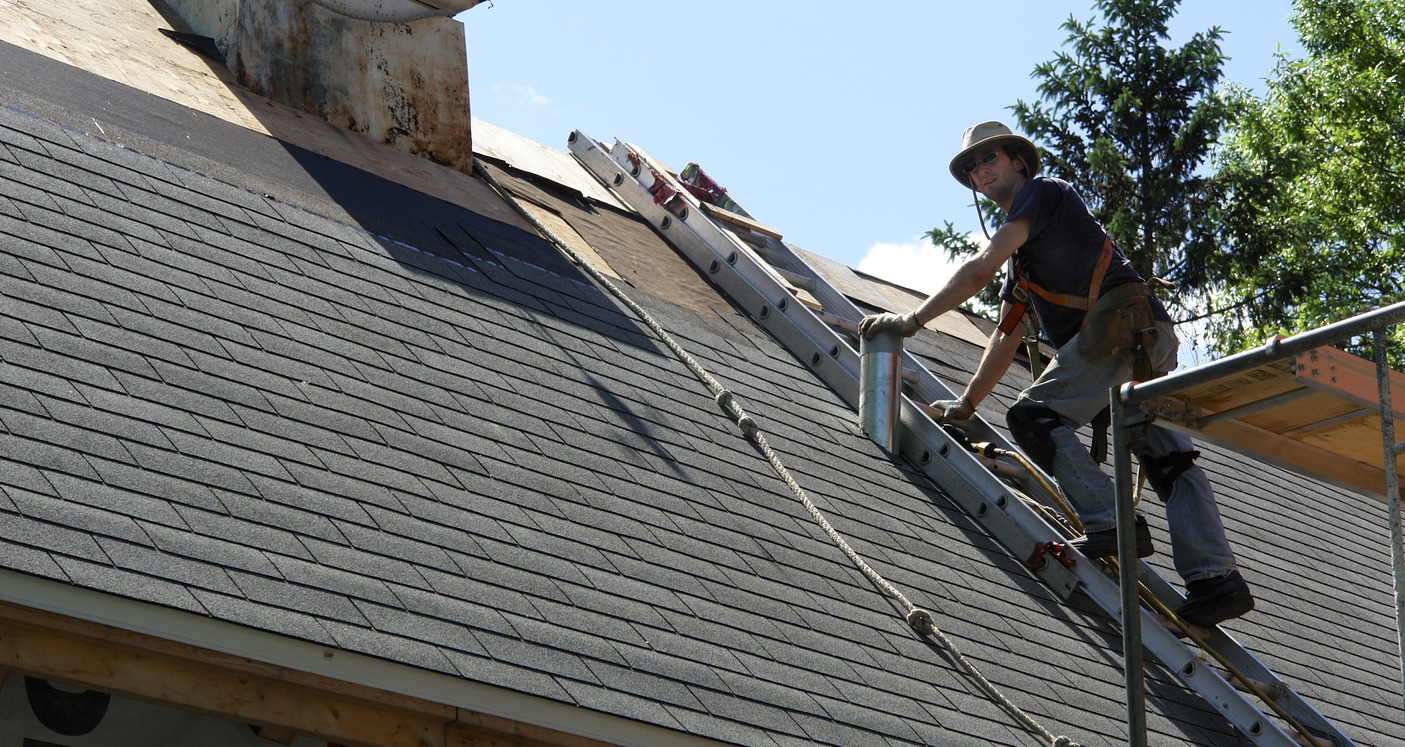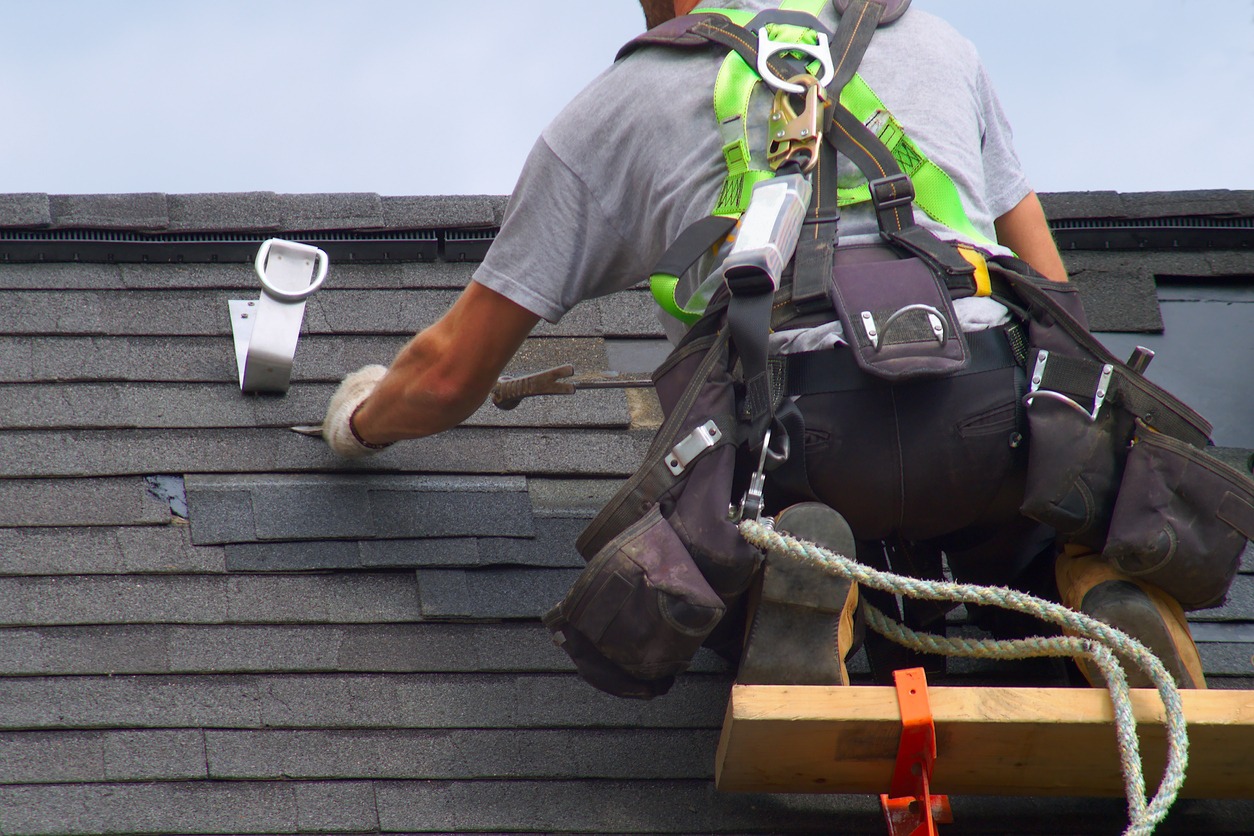Taking care of your home’s roof is essential, but safety should always be your number one concern. Whether you’re dealing with repairs, maintenance, or a complete roof makeover, you must ensure a secure work environment. Quality work, durable materials, timeliness, and affordability are essential, but nothing surpasses the importance of a safe job site. In this post, we’ll explore practical roofing safety tips designed for homeowners.
Why Prioritizing Roof Safety Matters
When it comes to working on roofs, safety isn’t just a box to tick—it’s a fundamental aspect for several reasons.
First of all, it secures the health and well-being of people working on roofs by minimizing risks like slips and falls. Safer practices mean fewer injuries, disabilities, and even potential fatalities.
Safety is also a key ingredient for maintaining the quality and integrity of the job. When we embrace safety, we’re steering clear of errors and missteps that could trigger a domino effect of extra costs and delays and even compromise the project’s structural integrity.
Also, implementing proper roof safety measures is a reflection of professionalism. This isn’t just about getting the job done; it’s about nurturing a culture of trust among clients and the community. Even if you’re a DIYer, safety will let you be trusted by your family and friends. It also acts as a magnet, drawing in skilled and dedicated professionals who take pride in their craft.
Roofing Safety Tips
Here are some of the tips to avoid falls and injuries while working on roof repair or replacement:
1. Use common sense
One of the simplest ways to ensure your safety is by relying on good old-fashioned common sense. Trust your instincts and exercise caution while working on a roof. Steer clear of any blatantly reckless actions, and you’re on the right track to staying safe. It’s when we become careless and overlook potential hazards that problems arise.
Practicing common sense involves moving deliberately and with caution. Be mindful of your steps, and keep tabs on the location of your tools. Stay aware of your surroundings, putting in your best effort to maintain safety and prevent any unfortunate tumbles from the roof.
In today’s world, it’s often said that “common sense isn’t all that common,” and sadly, there’s some truth to that. Avoid carelessness; you can spare yourself from a world of hurt.
2. Leave roof repairs to the experts
If you’re not used to working on roofs, it’s best to leave roof repairs to the professionals. When facing a roofing issue you’re unsure about, reaching out to a skilled roofing contractor is a safer bet. If you’re not comfortable navigating rooftops or if you lack experience in this area, hire a seasoned roofer. There’s no shame in seeking professional help.
While DIY projects can sometimes save you money, they only truly pay off when executed swiftly, accurately, and safely. Remember, a failed DIY attempt could cost you more than hiring a qualified contractor from the get-go.
3. Get proper training, if you want to do it yourself
If you really want to do the repair yourself and also learn a new skill so you can be a trained repairman, get trained. A well-trained person is more likely to follow safety protocols and prevent accidents.
Proper training and experience equip individuals with the essential knowledge and skills needed to work safely on roofs. This includes recognizing potential hazards and risks tied to roofing tasks and correctly handling equipment and tools. As workers gain experience, they get confidence in their abilities and enhance their competence, which translates to fewer errors and a reduced likelihood of accidents.
The Occupational Safety and Health Administration (OSHA) provides diverse safety training courses, including 10-hour and 30-hour construction safety courses. These courses encompass crucial safety subjects for construction industry workers, including those in roofing. Many organizations and training centers offer tailor-made roofing safety courses that concentrate on specific hazards, techniques, and best practices for roof work. Completing these courses can give you a certificate, which will make you qualified to take on clients yourself.
4. Never work in the rain
When it comes to roof repairs, the weather is a vital safety factor. Facing bad weather on a potentially dangerous roof is a recipe for trouble. It’s wiser to hold off on that roof repair for a bit than to risk a slippery, icy, or windy ascent.
In situations where immediate repair isn’t feasible, a professional contractor can step in. They can handle emergency fixes and even place protective tarps or temporary covers if necessary. Working on a roof during harsh weather just isn’t worth the risk.
5. Watch out for power lines on the roof
Don’t let low-lying power lines become an afterthought when moving ladders around your home for roof access. It’s easy to overlook them when you’re focused on placing the ladder in the right spot. In the same way, be cautious not to come into contact with power lines while navigating the roof itself. Alertness can prevent death or serious injuries when it comes to being mindful of the power lines.
Also, remember that electricity can jump distances when attracted by metal. Keep metal brackets and ladders clear of power lines, and avoid wearing items like tool belts or steel-capped boots when working near them.
6. Be careful as you walk on the roof
When treading on a shingled roof, take deliberate and calculated steps. Fully plant one foot before lifting the other. Keep an eye out for any unexpected movement that might occur if the roof deck is weak in some areas or if a shingle shifts beneath your feet. Be attentive to skylights, roof hatches, or other openings that could pose a fall hazard if not properly secured. Implement guardrails or covers to prevent accidents around these access points.
Don’t venture onto a section of the roof (or the entire roof) if the pitch feels too steep for you to feel comfortable. Trust your instincts. If walking on the roof feels unsafe, don’t hesitate to ask for the help of a local contractor.
7. Investigate as much roof damage as possible without climbing
Knowing how to safely walk on a roof is one thing, but there is much other information you can get without setting foot on your roof.
You can often find roof damage or leaks by inspecting your attic during the night with a flashlight. Look for any signs of hidden damage or leaks. You can also look at your roof from the ground by walking the perimeter at a distance, then use binoculars to zoom in.
8. Evaluate roof conditions to assess the hazards
Before starting any repair work, assess the conditions and identify potential hazards. Examine the roof’s structural integrity to detect weakened or compromised spots that might jeopardize safety. Do this by looking out for rot, water damage, or termite infestations.
Clear away the debris that could hinder access to the roof or create tripping hazards. Ensure that skylights, vents, and other rooftop protrusions are secure and intact. Stay vigilant for potential electrical hazards such as overhead power lines, damaged wiring, or equipment with improper grounding. Steer clear of these dangers and use non-conductive tools and ladders around electricity.
Also, keep in mind the fragility of some surfaces. Certain roofing materials, like aged shingles, clay tiles, or corrugated fiberglass panels, may be brittle and prone to breaking. Tread with caution on these surfaces.
Look for signs of instability like sagging, buckling, or detachment from rafters. Address issues with shaky areas before proceeding with your roofing repair work.
9. Use the right tools
Don’t underestimate the value of having the right tools at your disposal for every roofing task. Simple tools like a quality hammer, utility knife, and specialized roofing nails are non-negotiables. Also, consider expanding your toolkit with a nail or staple gun, an extension ladder, and a drill. While not all projects may demand these extras, they can certainly help get the job done more efficiently.
Whenever you’re using power tools, be sure to follow the manufacturer’s instructions for their use. Secure them with bungee cords or short ropes when you’re not using them so they don’t accidentally fall off the roof. Keep your hand tools in a bucket hung from a roof bracket. Keep cords and ropes out of your way to prevent tripping or slipping on them.
10. Do not use cheap ladders and use them carefully
Ladder-related injuries in the US tally reach over 500,000 annually, including roughly 300 deaths, as per the Consumer Product Safety Commission. And the leading cause of that is subpar ladders, or ladders that are past their prime and should not be used anymore. Invest in a sturdy, well-constructed ladder, and don’t use any wobbly ones or those that have been around longer than you have.
When using the ladder, place it on a solid, even surface and ensure stability. For every 4 feet of height, position the base 1 foot away from the wall. Extend the ladder 3 feet above the roof edge, and secure it to prevent slipping or shifting.
The Occupational Safety and Health Administration (OSHA) outlines comprehensive guidelines for safety when using the ladder for whatever purpose:
- Never rest your ladder against gutters or siding, especially vinyl—they can’t support your weight. This protects both your home and yourself.
- Make sure your ladder extends at least three feet above the point of support, and don’t step on any of the rungs beyond this point.
- Avoid carrying more than one item at a time up or down the ladder. Shifting items can alter your balance and lead to a fall.
11. Use safety equipment
When embarking on a roofing project, it’s best to use personal fall protection systems such as a full-body harness, a lanyard, or a retractable lifeline.
Headwear is another protection that seems like a no-brainer, but it’s surprising how many people in the field skip this crucial gear. Slip on a helmet before you ascend to the roof. You might not end up needing it, but it could be the very thing that saves your life.
12. Dress appropriately
To be safe for roof work, what you wear must offer mobility and flexibility, so it’s essential to wear clothes that aren’t restricting but it shouldn’t hang off you. Wear secure pants, avoid wearing clothes with rips or tears, and don’t wear hanging jewelry or accessories.
Use slip-resistant shoes or boots that offer solid traction and sturdy support. These essential components should fit snugly and ensure comfort throughout extended periods of wear.
13. Do not go solo
While your roofing project might not require two people to work on, it’s important not to work alone. Get help from a friend or family member so they can offer support when you need it. They don’t need to get up on the roof with you – at least, inform them that you’re on the roof, and they must be ready to help should you need it. They can lend a hand or fetch forgotten tools without you needing to take extra trips up and down the ladder. And should an accident occur, having them around means quicker access to help than going it alone.
14. Never drink and climb
Alcohol and climbing on the roof don’t mix. Make sure you have your mental and physical faculties sober to avoid distractions and limitations that could make you tumble off.
15. Avoid distractions
We get it; most of us are glued to our phones. But on the roof, it’s a different world. It’s best to silence that phone to keep distractions at bay. If you can’t, get a ground buddy to handle messages while you work safely above.


